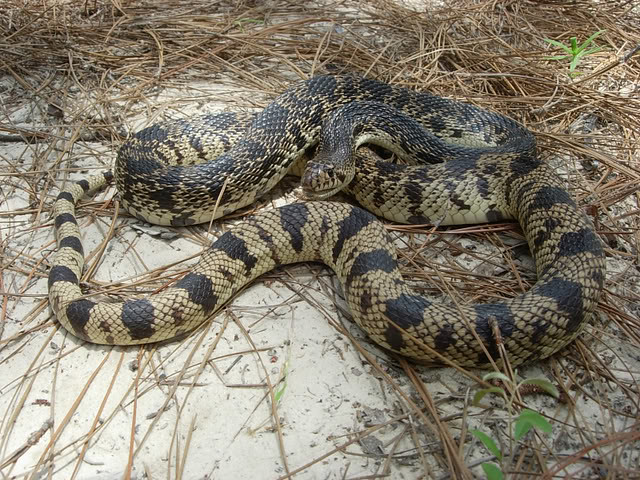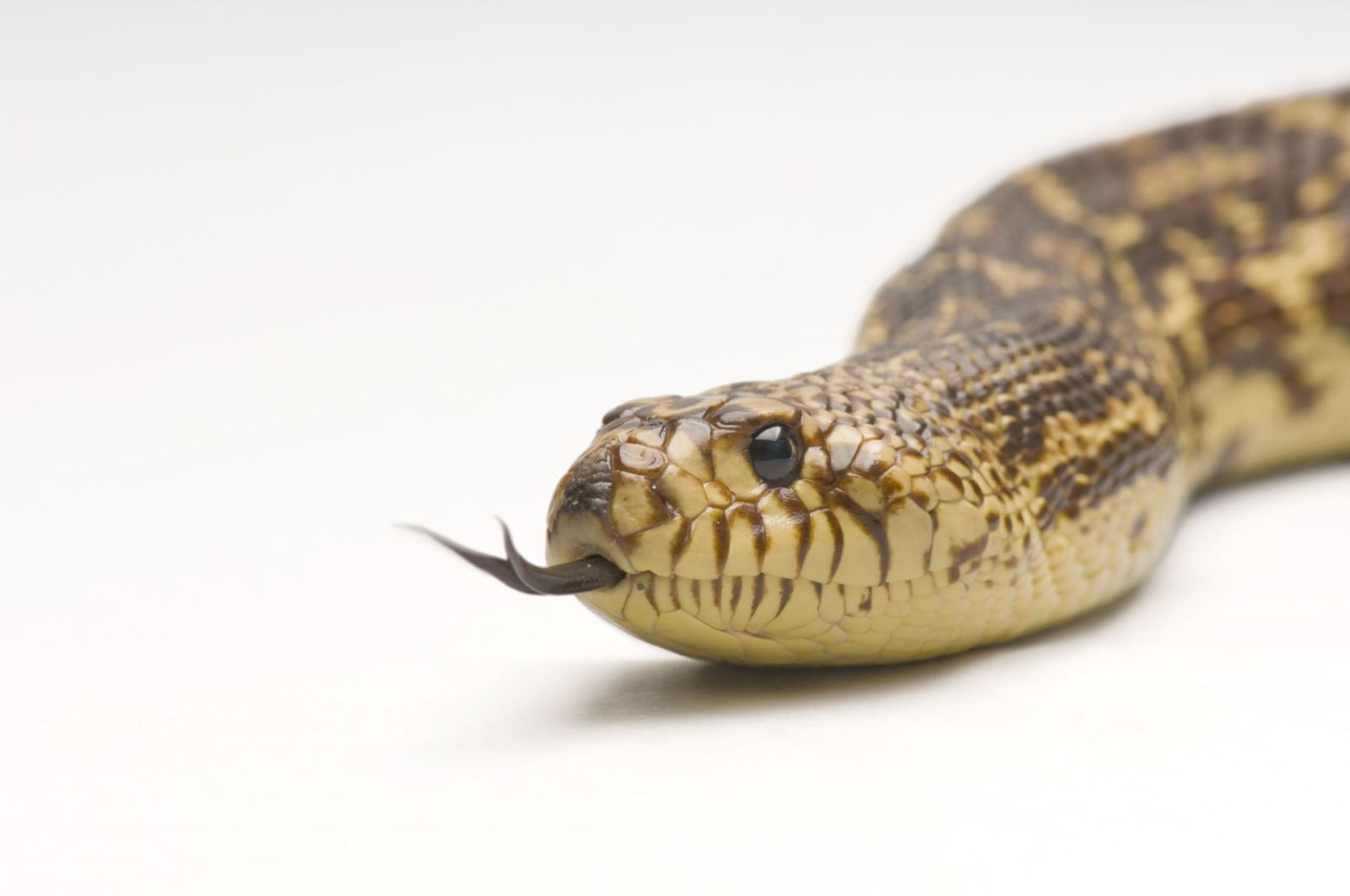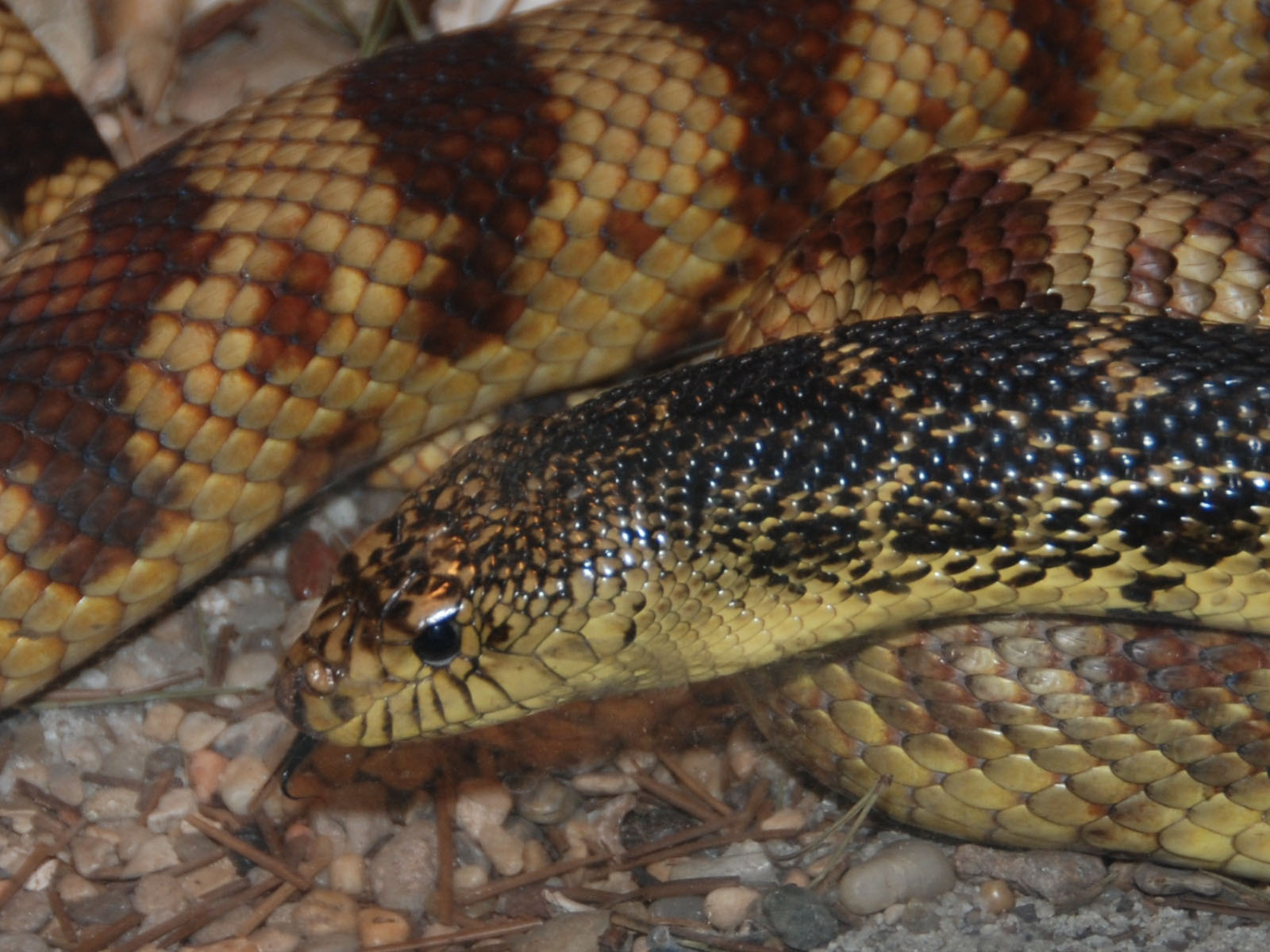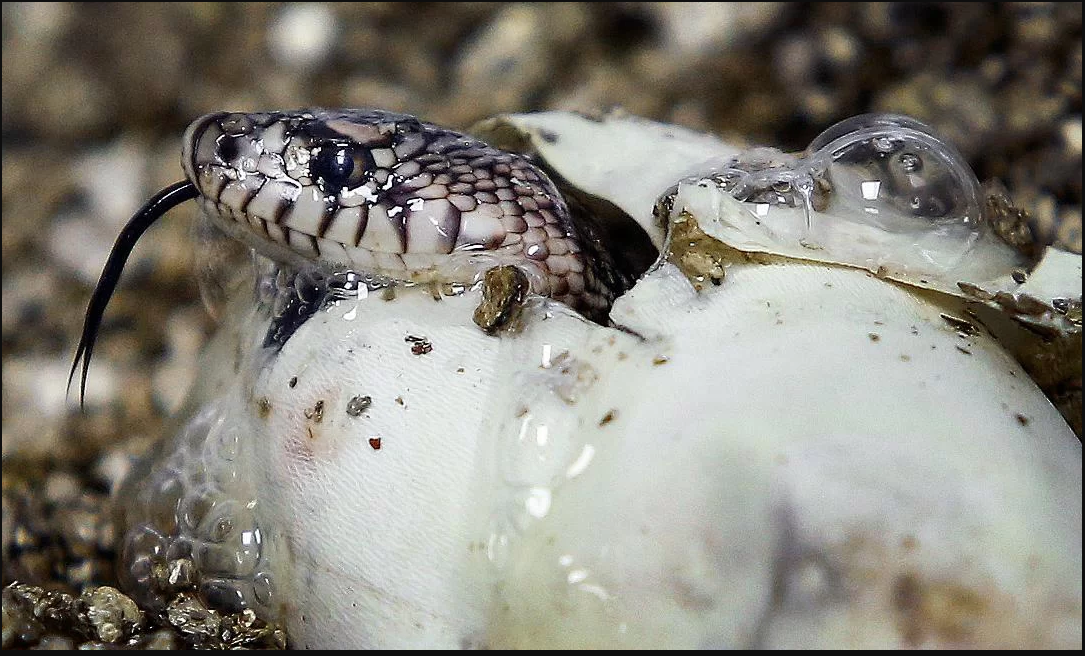Populations of Louisiana pine snakes are found in Louisiana and east Texas. Louisiana pine snakes prefer the sandy soil of longleaf pine forests. Longleaf pines are slow-growing and allow lots of sunlight to penetrate through to the forest floor. This leads to drying soil and the growth of understory plants, which are perfect conditions for pocket gophers, and therefore, for the pine snakes. Unfortunately longleaf pine forests have been extensively logged and replaced with faster-growing loblolly pine trees, which shade out the forest floor and reduce habitat. In its range, the pine snake’s predators are mostly large mammals.

Louisiana pine snakes are carnivorous. Baird’s pocket gophers (Geomys breviceps) are the largest component of their diet. Louisiana pine snakes are constrictors, but they don’t wrap themselves around prey like boa constrictors do. Instead they burrow into pocket gopher tunnels and use their bodies to pin rodents against the wall of the passageway. The snake then expands its body so the gopher is crushed and can’t escape.

Pine snakes spend more than half of their lives belowground, move very short distances—usually just 10 to 20 feet (three to six meters). These pine snakes produce the largest eggs and hatchlings of any North American snake. Hatchlings can measure up to 22 inches (56 centimeters) in length—over a third of their mother’s body length. However, they also produce some of the smallest clutch sizes, with just three to five eggs produced per pregnancy. Little information exists on the longevity of the Louisiana pine snake. Close relatives of the species can live more than 20 years in captivity, but this is probably higher than average.

The Louisiana pine snake is internationally listed as endangered, and federally it’s been proposed threatened. The loss of longleaf pine forests has reduced the amount of habitat available for Louisiana pine snakes, and fire suppression is also a problem. These snakes can easily escape the flames by retreating underground, and fire helps to maintain a landscape dominated by longleaf pine. Without fire, crowding of the midstory of the forest leads to unfavorable conditions for pocket gophers and pine snakes.

Additionally, most pine snakes live near roads, and the snakes are often killed by automobiles. Fortunately several steps have already been taken to conserve these rare reptiles. The Texas Parks & Wildlife Department and the Louisiana Department of Wildlife and Fisheries are both involved in the restoration of longleaf pine forests. Some timber companies have stopped planting fast-growing loblollies in favor of the longleaf pine.
According to.nwf.org











